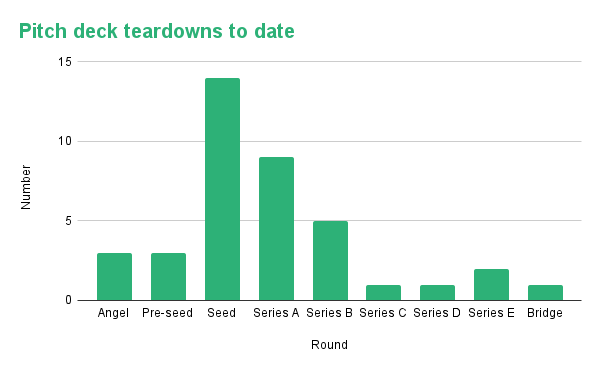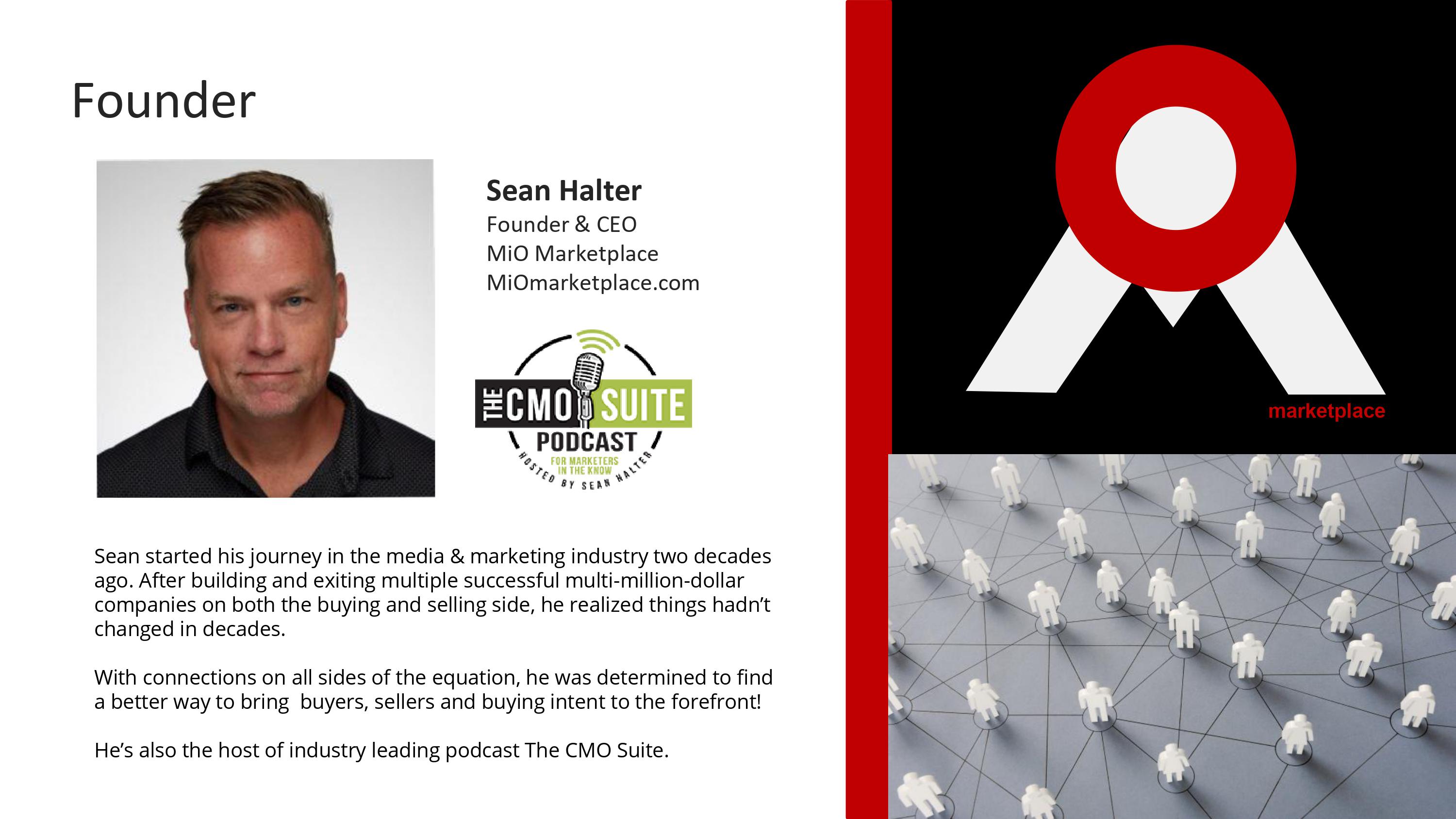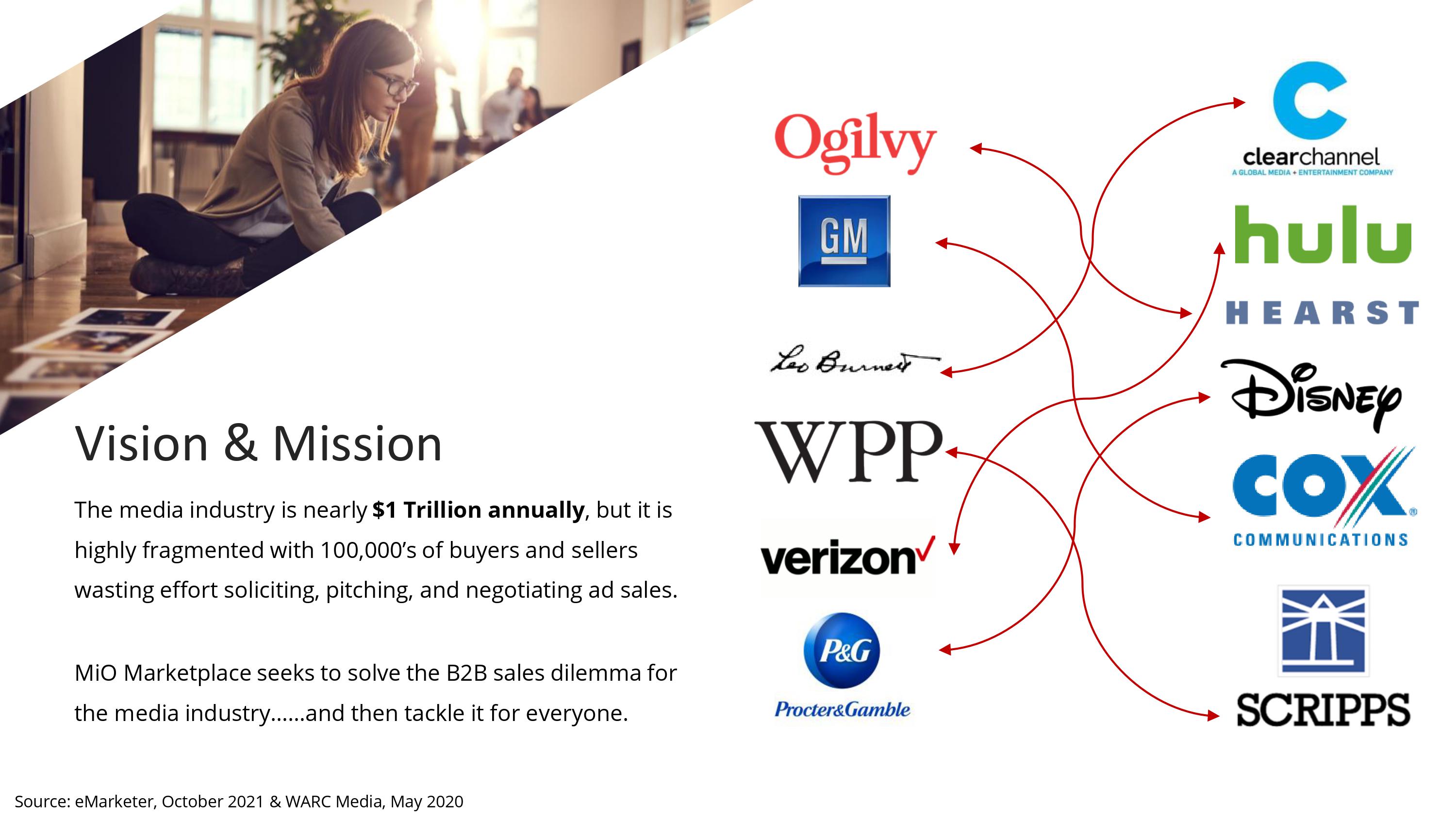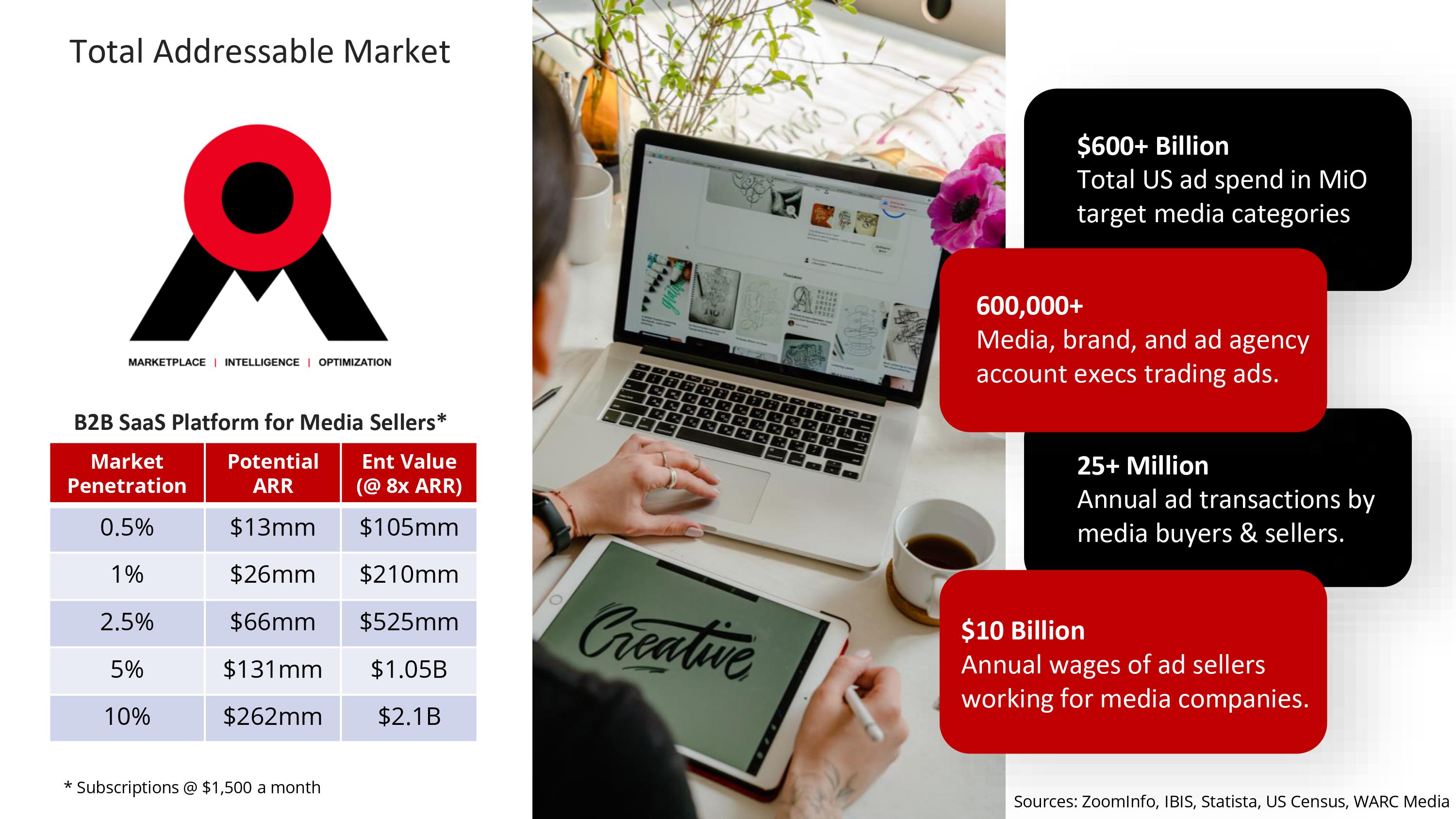Welcome to our 40th Pitch Deck Teardown! Goodness, time flies.
Of those 40, just three were angel rounds, so today, we’ll take apart the angel deck of MiO Marketplace, a platform for media publishers and buyers. The company raised $550,000 at a $3.6 million pre-money valuation.

We’re looking for more unique pitch decks to tear down, so if you want to submit your own, here’s how you can do that.
Slides in this deck
MiO Marketplace comes out of the gate hard and just keeps going. The deck didn’t include all the important bits, however, and I wish the company had done a few things differently, but we’ll get to that. For now, here are the 16 slides that make up its angel deck:
- Cover slide
- History slide (“Evolution of online marketplaces”)
- Vision and mission slide
- Problem slide
- Solution slide
- Opportunity slide
- Market-size slide
- Competition slide (“B2B SaaS for Media Buyers/Sellers”)
- Value proposition slide 1 (“Features for buyers”)
- Value proposition slide 2 (“Intelligence for sellers”)
- Business model slide (labeled as “Go-to-market”)
- Traction slide
- Financial slide (labeled as “Projections”)
- Team slide (“Founder”)
- Board of directors slide
- Contact slide
Three things to love
MiO nails its pitch in a few really important parts, which is ever so delightful. Its team slide focuses on all the right things, it does a good job explaining its value prop and including the company’s mission helps solidify how it views the landscape.
Really promising team slide

At the earliest stages of a new business, investors don’t have a lot to go on: There’s not much of a product yet, there isn’t much traction — there’s really not much of anything. So, how do you evaluate an early-stage company? You look at things like whether there’s a big enough market, problem and opportunity for return, but most importantly, you have to consider whether this is the right team to bring this product to market. On paper, CEO and founder Sean Halter is a good bet. He claims to have decades of experience and appears to have deep market understanding. Those are all useful. So what does a VC do next? A bit of light due diligence to see if what’s on the slide matches up.
This slide checks all the boxes, but my one bit of advice would be to move it up from being the last slide in the deck. The story does a lot of heavy lifting here, and while it’s fun to leave the investors on a high note, it’s usually better to start strong.
Solid value proposition story
On slides 9 and 10, the company tells a great story about why it is valuable to its customers:

Creating a dashboard for media buyers is a good idea, and I’m impressed with the company’s tool kit. This seems like the right set of value-add tools to have as part of a buying and selling marketplace.
Still, there’s room to improve: I wish it had made the value prop more benefits driven. For example, integrated chat is good, but “Faster, clearer communication through integrated chat” would’ve been better.

Sales intelligence is powerful, and this dashboard screenshot looks great. Plus, the points here are all benefits driven (“Save time by…”). Showing investors what the potential benefits are of your product is a powerful lever for storytelling — and it helps prime the pump for later, when they start making due diligence calls with industry experts.
A mission slide!

A vision and mission slide can help investors get a good picture of what the founders are trying to do, both in the long and short term. The vision of a single, centralized marketplace where buying and selling takes place is brilliant and extremely bold. If the company can pull it off, though, there’s a huge opportunity for being the eBay of advertising.
Once again, the slide isn’t perfect: You’d have to be pretty deep in the business to know why those businesses are in two columns and what the arrows mean. I’m also curious how they got to the $1 trillion number and how it applies to the company. Some links or an appendix would be helpful here.
Three things that could be improved
MiO Marketplace had some zingers that made me lean forward, but it also made some pretty basic mistakes. Let’s take a look at the ones that stood out the most:
Investors know what a marketplace is…
The second slide in the deck confused me at first, but then I realized it was explaining the basics of online marketplaces.

Using the second slide of your slide deck to explain what any investor should know is a pretty big red flag. If you think your investors don’t know this, you’re talking to the wrong investors. It’s a pretty weak start to a pitch narrative.
This market-sizing slide is a mess
The total addressable market (TAM) should be the revenue you could generate if you somehow munched up the entire, complete market you are targeting. For example, if you are in the automotive industry, your TAM is the value of every single vehicle sold in the entire world. From there, you add some common sense to whittle that down to your target market. If you make sports cars, you’re not going to compete with pickup trucks. You probably won’t sell to every single country and market. You’ll have competitors; people wouldn’t magically switch away from buying BMWs and Fords and Toyotas to exclusively buy your vehicles. It does require a little bit of research, but it’s not rocket science.
In this slide, the company is presenting a whole bunch of numbers that are seemingly not relevant to its TAM:

TAM/SAM/SOM calculations are typically done top-down: You start with the biggest number you can reasonably claim and then trim down from there. Above, you’re seeing a bottoms-up approach: You match your product to the market and assume a certain percentage of market penetration. That’s also a fair way of calculating a market size, but you most commonly see this for markets that are nascent and unknown. But advertising isn’t that; it’s a well-established market with a lot of research and reporting annually, so it’s curious to see a bottoms-up calculation here.
It’s also unclear why the annual wages of ad sellers are relevant to MiO’s business. The number of advertising transactions is huge, so that’s great, but MiO isn’t charging per transaction; it’s a subscription service. The number of ad execs seems more useful, but if MiO is planning to charge $1,500 per month, I’m guessing that’s per organization, not per ad sales seat, which means that the number of employees in this market also isn’t super relevant.
Also not really relevant: total ad spend. The business model doesn’t take a percentage of the ad spend.
I also find including the company’s valuation here a bit troubling: It assumes that its valuation at any given time will be 8x its ARR. That isn’t completely unreasonable — we’ve seen 40x multiples in the past — but a valuation isn’t really all that relevant until it’s time to talk about an exit. Most founders should eschew exit conversations in their pitch decks, especially at the pre-seed stage. And before exits, funding rounds are negotiated on a per-case basis anyway.
Overall, this whole slide puts up a red flag: There’s a lot of data here, but it doesn’t connect to the overall direction I’d expect from a pitch deck.
That’s your go-to-market?
Typically, from a go-to-market slide, you would expect, well, a go-to-market plan. For early-stage startups, that usually includes an outline of a marketing plan, a target customer persona and perhaps a beachhead audience.
For Uber, the go-to-market could be, “We will advertise to people who want the convenience of taxis but the comfort of a limousine. We launch in San Francisco to iron out any technical issues, and then get market validation by launching in New York and Miami.”
For a company like MiO Marketplace, there are a number of different go-to-market options, but given that it’s B2B SaaS with a high price point, I suspect there will be a sales force involved. From there, you can carve out a beachhead market.

This is not a go-to-market strategy; it’s a business model slide: B2B SaaS and subscription pricing are both aspects of a business model.
The strategy for growing both sides of the marketplace needs to be very carefully thought out. Half a paragraph on a slide doesn’t quite cut it.
It’s unclear why the market dominance of the top five agencies is considered “network effects.” Signing up two or three of those big agencies would be a huge win for MiO, for sure, but the go-to-market plan here doesn’t address that.
This slide makes me worry that the team itself hasn’t really thought through how it is going to market itself. Here are some followup questions I have:
- Who are the 100 first buyers and sellers on your platform, and how are you going to attract them?
- Which particular medium, advertiser or region will you target first and why?
- How do you ensure that both the sell and buy sides of the marketplace grow in a way that is compatible?
- What happens if you have too many buyers or too many sellers on the platform? Is there a way to artificially equalize that as you grow?
- What is your top-of-funnel for your buyer and seller sales? How can you grow quickly enough to sustain your momentum after you launch?
The full pitch deck
If you want your own pitch deck teardown featured on TC+, here’s more information. Also, check out all our Pitch Deck Teardowns and other pitching advice, all collected in one handy place for you!































Comment